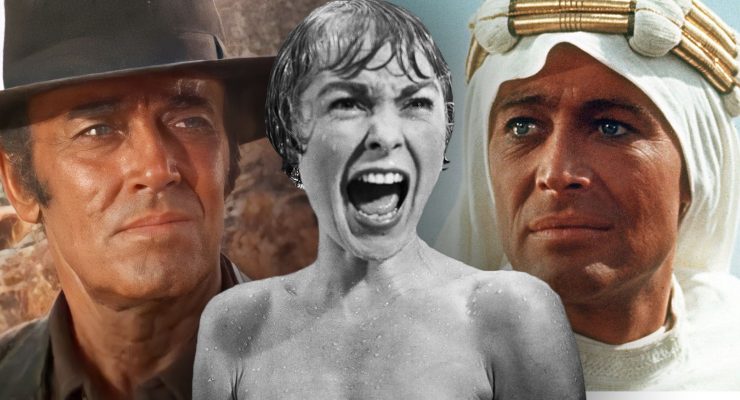Kung Fu Panda 3, 2016.
Directed by Jennifer Yuh & Alessandro Carloni.
Starring Jack Black, Dustin Hoffman, Angelina Jolie, Bryan Cranston, J.K. Simmons, Kate Hudson, James Hong, Randall Duk Kim, Seth Rogen, David Cross, Lucy Liu and Jackie Chan.
SYNOPSIS:
Third instalment of the animated series, in which Po, the titular panda, finally meets his real father, and also has to do battle with Kai, a supernatural villain who drains the chi from every Kung Fu Master he encounters.
The quality of Dreamworks’ animated films has always varied greatly – from poor (Shark Tale) to great (Shrek, How to Train Your Dragon) with a whole lot of mediocre in between (Bee Movie, Rise of the Guardians, Over the Hedge). Their track record with sequels has been likewise uneven – although they were financially successful, each Shrek was weaker than the last, and I’d personally rather watch the new Ghostbusters trailer on an endless loop than sit through any of the ‘Madagascar’ films again. The first two Kung Fu Panda films, however, were a breath of fresh air, both of them containing enough humour, heart and thrills even to compete with Pixar at the top of their game. Luckily, this third instalment continues that trend.
At the end of Kung Fu Panda 2 we learned that not only was Ping not Po’s real father (I know, a goose not being a panda’s biological parent? I was as shocked as you were!), there was also a whole village of pandas in the mountains somewhere. In this film, Po is tracked down by his real father Li Shan and brought to this village, where he is embraced by his kin and taught how to be a real panda – i.e. eat with your hands (because you can stuff more in your mouth that way) and roll everywhere instead of walking. He also goes there to learn the secret of mastering chi, which may be the only way to stop the fearsome warrior Kai (voiced by J.K. Simmons), who is on a mission to destroy the Dragon Warrior.
I’ve personally never been a big fan of a Jack Black – I’ve only ever liked him as Po and as Dewey Finn in School of Rock, probably because in those roles he’s playing someone who’s passionate without being a total jerk. Indeed, every time Po sees or learns some new kung-fu related thing, it’s hard to disagree with his squealings of ‘Awesome!’. The rest of the voice cast are also well-utilised – Dustin Hoffman’s Master Shifu is a welcomingly bigger presence that he was in the previous film, David Cross and Seth Rogen squeeze in a couple of good one-liners, and for the first time in the series Angelina Jolie’s Tigress gets a laugh (her look of confusion when she can’t understand Po’s plan for defending the panda village). However, for me, the high point of the film is a hilarious sequence where Po and Li Shan (voiced by the wonderfully game-for-a-laugh Bryan Cranston) explore the Hall of Warriors together, trying on battle gear and accidentally destroying ancient artefacts in the process.
Even though it’s expected that all modern CGI-animated films look incredible, the Kung Fu Panda films have always raised the ‘eye candy’ bar (no pun intended). The film is book-ended with huge anime-inspired fight scenes set in the spirit realm, which are exceptionally amazing to look at, and there are some gorgeously stylised montages as well (Po getting the pandas ready for battle, and Kai’s origin story). The character designs are very cartoony, but this allows for a much greater range of expression and emotion than, say, the characters in the Shrek films (which always had a hint of the ‘uncanny valley’ about them).
There’s a great running joke where nobody remembers hearing the villain’s name before, some nice call-backs to the first film (“except you, Mantis – you look about the same”, Po’s dad breaking the vase of a thousand souls), Randall Duk Kim’s delightfully dotty Grand Matser Oogway returns (in spirit form) and there’s a satisfying ‘the student becomes the teacher’ arc that brings the trilogy full circle. Not everything about the film works, however – one plot point is painfully easy to predict, Kate Hudson’s female panda character is completely underdeveloped, and as lively and entertaining as the battle sequences are, none of them tops either Tai Lung’s escape or the bridge fight from the first film. It also re-treads some of the same emotional ground that the second film did (regarding Po’s mother) which lessens its impact.
Even though they will never be regarded as ‘high art’ because, let’s face it, they’re about a panda that does kung fu, these films are still superbly crafted slices of family entertainment. Sadly however, it seems the people at Dreamworks seem intent on milking this cash cow (panda?) for all it’s worth – three further sequels have been announced. Ska-douches.
Flickering Myth Rating – Film: ★ ★ / Movie: ★ ★ ★ ★
Eric Bay-Andersen
. url=”.” . width=”100%” height=”150″ iframe=”true” /]










